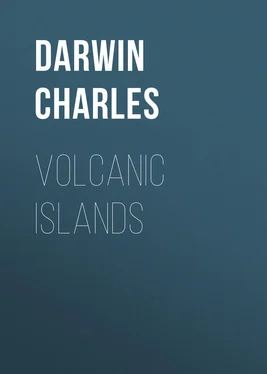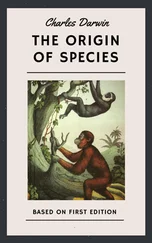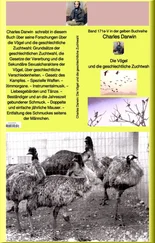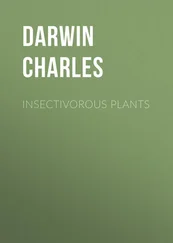Charles Darwin - Volcanic Islands
Здесь есть возможность читать онлайн «Charles Darwin - Volcanic Islands» — ознакомительный отрывок электронной книги совершенно бесплатно, а после прочтения отрывка купить полную версию. В некоторых случаях можно слушать аудио, скачать через торрент в формате fb2 и присутствует краткое содержание. Жанр: foreign_antique, foreign_prose, на английском языке. Описание произведения, (предисловие) а так же отзывы посетителей доступны на портале библиотеки ЛибКат.
- Название:Volcanic Islands
- Автор:
- Жанр:
- Год:неизвестен
- ISBN:нет данных
- Рейтинг книги:5 / 5. Голосов: 1
-
Избранное:Добавить в избранное
- Отзывы:
-
Ваша оценка:
- 100
- 1
- 2
- 3
- 4
- 5
Volcanic Islands: краткое содержание, описание и аннотация
Предлагаем к чтению аннотацию, описание, краткое содержание или предисловие (зависит от того, что написал сам автор книги «Volcanic Islands»). Если вы не нашли необходимую информацию о книге — напишите в комментариях, мы постараемся отыскать её.
Volcanic Islands — читать онлайн ознакомительный отрывок
Ниже представлен текст книги, разбитый по страницам. Система сохранения места последней прочитанной страницы, позволяет с удобством читать онлайн бесплатно книгу «Volcanic Islands», без необходимости каждый раз заново искать на чём Вы остановились. Поставьте закладку, и сможете в любой момент перейти на страницу, на которой закончили чтение.
Интервал:
Закладка:
The stream of lava, which fills the narrow gorge eastward of the town of Praya, judging from its course, seems, as before remarked, to have come from Signal Post Hill, and to have flowed over the plain, after its elevation (The sides of this gorge, where the upper basaltic stratum is intersected, are almost perpendicular. The lava, which has since filled it up, is attached to these sides, almost as firmly as a dike is to its walls. In most cases, where a stream of lava has flowed down a valley, it is bounded on each side by loose scoriaceous masses.): the same observation applies to a stream (possibly part of the same one) capping the sea cliffs, a little eastward of the gorge. When I endeavoured to follow these streams over the stony level plain, which is almost destitute of soil and vegetation, I was much surprised to find, that although composed of hard basaltic matter, and not having been exposed to marine denudation, all distant traces of them soon became utterly lost. But I have since observed at the Galapagos Archipelago, that it is often impossible to follow even great deluges of quite recent lava across older streams, except by the size of the bushes growing on them, or by the comparative states of glossiness of their surfaces, – characters which a short lapse of time would be sufficient quite to obscure. I may remark, that in a level country, with a dry climate, and with the wind blowing always in one direction (as at the Cape de Verde Archipelago), the effects of atmospheric degradation are probably much greater than would at first be expected; for soil in this case accumulates only in a few protected hollows, and being blown in one direction, it is always travelling towards the sea in the form of the finest dust, leaving the surface of the rocks bare, and exposed to the full effects of renewed meteoric action.
INLAND HILLS OF MORE ANCIENT VOLCANIC ROCKS.
These hills are laid down by eye, and marked as A, B, C, etc., in Map 1. They are related in mineralogical composition, and are probably directly continuous with the lowest rocks exposed on the coast. These hills, viewed from a distance, appear as if they had once formed part of an irregular tableland, and from their corresponding structure and composition this probably has been the case. They have flat, slightly inclined summits, and are, on an average, about six hundred feet in height; they present their steepest slope towards the interior of the island, from which point they radiate outwards, and are separated from each other by broad and deep valleys, through which the great streams of lava, forming the coast-plains, have descended. Their inner and steeper escarpments are ranged in an irregular curve, which rudely follows the line of the shore, two or three miles inland from it. I ascended a few of these hills, and from others, which I was able to examine with a telescope, I obtained specimens, through the kindness of Mr. Kent, the assistant-surgeon of the "Beagle"; although by these means I am acquainted with only a part of the range, five or six miles in length, yet I scarcely hesitate, from their uniform structure, to affirm that they are parts of one great formation, stretching round much of the circumference of the island.
The upper and lower strata of these hills differ greatly in composition. The upper are basaltic, generally compact, but sometimes scoriaceous and amygdaloidal, with associated masses of wacke: where the basalt is compact, it is either fine-grained or very coarsely crystallised; in the latter case it passes into an augitic rock, containing much olivine; the olivine is either colourless, or of the usual yellow and dull reddish shades. On some of the hills, beds of calcareous matter, both in an earthy and in a crystalline form, including fragments of glossy scoriae, are associated with the basaltic strata. These strata differ from the streams of basaltic lava forming the coast-plains, only in being more compact, and in the crystals of augite, and in the grains of olivine being of much greater size; – characters which, together with the appearance of the associated calcareous beds, induce me to believe that they are of submarine formation.
Some considerable masses of wacke, which are associated with these basaltic strata, and which likewise occur in the basal series on the coast, especially at Quail Island, are curious. They consist of a pale yellowish- green argillaceous substance, of a crumbling texture when dry, but unctuous when moist: in its purest form, it is of a beautiful green tint, with translucent edges, and occasionally with obscure traces of an original cleavage. Under the blowpipe it fuses very readily into a dark grey, and sometimes even black bead, which is slightly magnetic. From these characters, I naturally thought that it was one of the pale species, decomposed, of the genus augite; – a conclusion supported by the unaltered rock being full of large separate crystals of black augite, and of balls and irregular streaks of dark grey augitic rock. As the basalt ordinarily consists of augite, and of olivine often tarnished and of a dull red colour, I was led to examine the stages of decomposition of this latter mineral, and I found, to my surprise, that I could trace a nearly perfect gradation from unaltered olivine to the green wacke. Part of the same grain under the blowpipe would in some instances behave like olivine, its colour being only slightly changed, and part would give a black magnetic bead. Hence I can have no doubt that the greenish wacke originally existed as olivine; but great chemical changes must have been effected during the act of decomposition thus to have altered a very hard, transparent, infusible mineral, into a soft, unctuous, easily melted, argillaceous substance. (D'Aubuisson "Traite de Geognosie" tome 2 page 569 mentions, on the authority of M. Marcel de Serres, masses of green earth near Montpellier, which are supposed to be due to the decomposition of olivine. I do not, however, find, that the action of this mineral under the blowpipe being entirely altered, as it becomes decomposed, has been noticed; and the knowledge of this fact is important, as at first it appears highly improbable that a hard, transparent, refractory mineral should be changed into a soft, easily fused clay, like this of St. Jago. I shall hereafter describe a green substance, forming threads within the cells of some vesicular basaltic rocks in Van Diemen's Land, which behave under the blowpipe like the green wacke of St. Jago; but its occurrence in cylindrical threads, shows it cannot have resulted from the decomposition of olivine, a mineral always existing in the form of grains or crystals.)
The basal strata of these hills, as well as some neighbouring, separate, bare, rounded hillocks, consist of compact, fine-grained, non-crystalline (or so slightly as scarcely to be perceptible), ferruginous, feldspathic rocks, and generally in a state of semi-decomposition. Their fracture is exceedingly irregular, and splintery; yet small fragments are often very tough. They contain much ferruginous matter, either in the form of minute grains with a metallic lustre, or of brown hair-like threads: the rock in this latter case assuming a pseudo-brecciated structure. These rocks sometimes contain mica and veins of agate. Their rusty brown or yellowish colour is partly due to the oxides of iron, but chiefly to innumerable, microscopically minute, black specks, which, when a fragment is heated, are easily fused, and evidently are either hornblende or augite. These rocks, therefore, although at first appearing like baked clay or some altered sedimentary deposit, contain all the essential ingredients of trachyte; from which they differ only in not being harsh, and in not containing crystals of glassy feldspar. As is so often the case with trachytic formation, no stratification is here apparent. A person would not readily believe that these rocks could have flowed as lava; yet at St. Helena there are well-characterised streams (as will be described in an ensuing chapter) of nearly similar composition. Amidst the hillocks composed of these rocks, I found in three places, smooth conical hills of phonolite, abounding with fine crystals of glassy feldspar, and with needles of hornblende. These cones of phonolite, I believe, bear the same relation to the surrounding feldspathic strata which some masses of coarsely crystallised augitic rock, in another part of the island, bear to the surrounding basalt, namely, that both have been injected. The rocks of a feldspathic nature being anterior in origin to the basaltic strata, which cap them, as well as to the basaltic streams of the coast-plains, accords with the usual order of succession of these two grand divisions of the volcanic series.
Читать дальшеИнтервал:
Закладка:
Похожие книги на «Volcanic Islands»
Представляем Вашему вниманию похожие книги на «Volcanic Islands» списком для выбора. Мы отобрали схожую по названию и смыслу литературу в надежде предоставить читателям больше вариантов отыскать новые, интересные, ещё непрочитанные произведения.
Обсуждение, отзывы о книге «Volcanic Islands» и просто собственные мнения читателей. Оставьте ваши комментарии, напишите, что Вы думаете о произведении, его смысле или главных героях. Укажите что конкретно понравилось, а что нет, и почему Вы так считаете.












